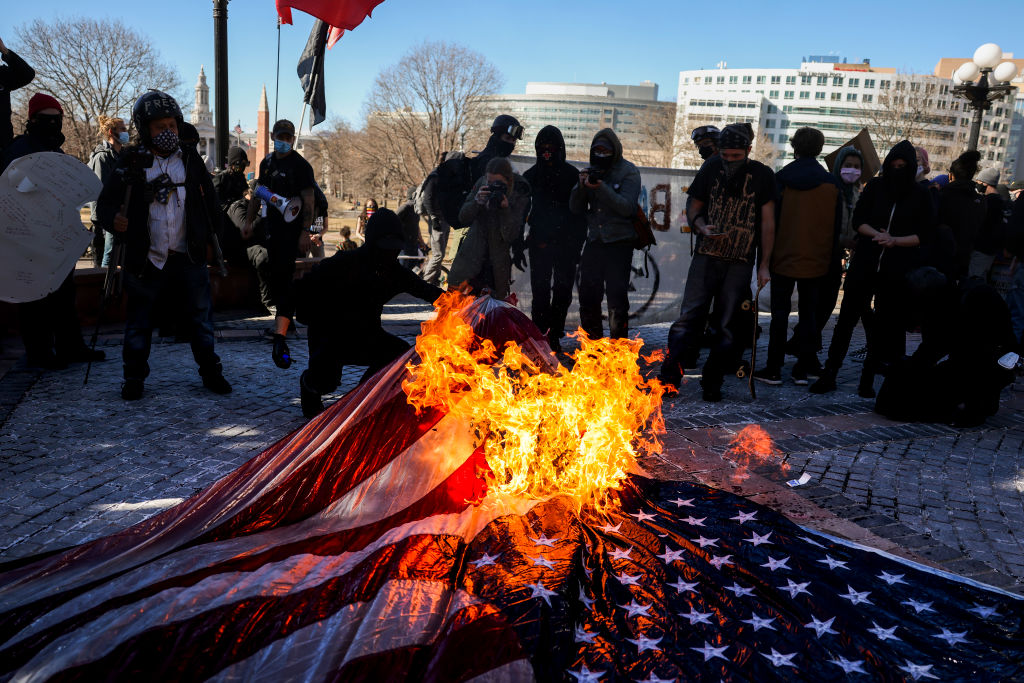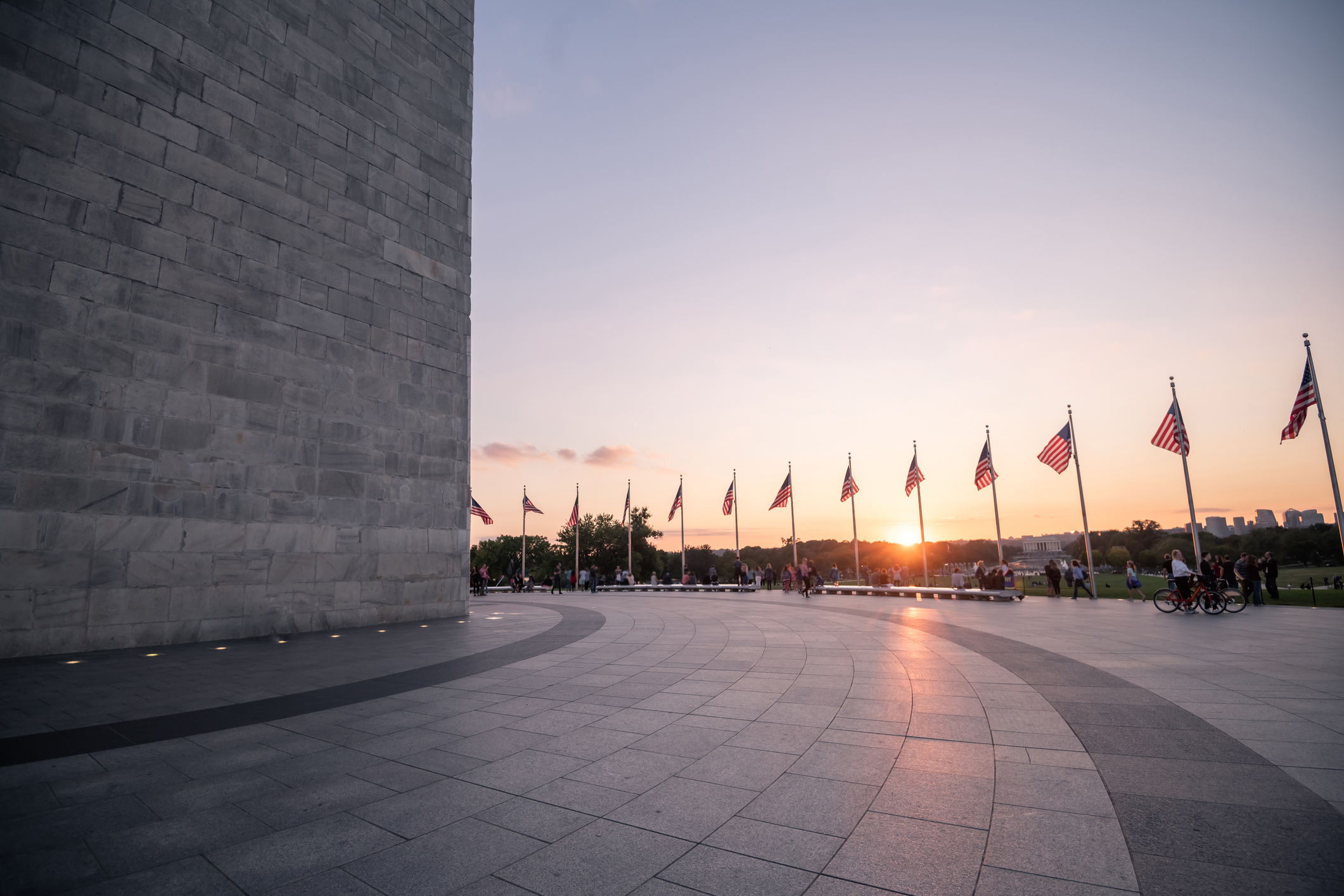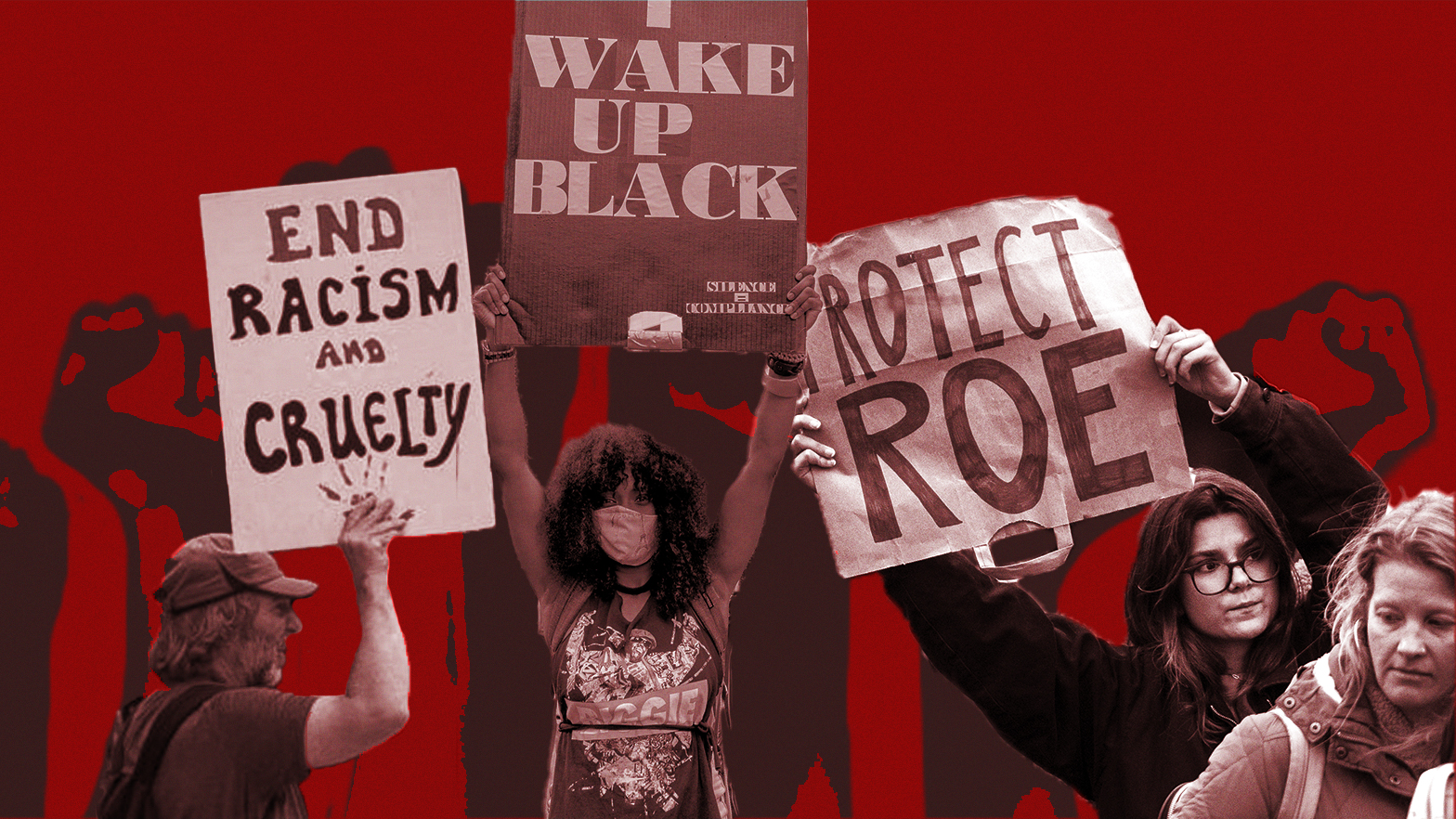Racial tribalism doesn’t have to be part of the curriculum to dominate education.
DEI and the End of the Constitutional Order

Critical race theory was never designed to reveal truth—it was designed to achieve power.
The American Mind is pleased to present this excerpt from the new book America’s Cultural Revolution: How the Radical Left Conquered Everything by Christopher F. Rufo. Copyright © 2023 by Christopher F. Rufo. Reprinted by permission of Broadside Books, an imprint of HarperCollins Publishers.
The ambition of the critical race theorists and their confederates in “diversity, equity, and inclusion” is not simply to achieve cultural hegemony over the bureaucracy, but to use this power to reshape the structures of American society. But in the miasma of mystical reasoning and therapeutic language, it is sometimes easy to lose sight of the critical question: What specifically do they want?
The answer is to be found in the original literature of critical race theory which, before its transformation in the euphemisms of “diversity, equity, and inclusion,” was remarkably candid about the discipline’s political objectives. They had abandoned the Marxist-Leninist vocabulary of their precursors, such as Angela Davis and the Black Panther Party, but the critical race theorists imagined a revolution that struck just as deeply. They cobbled together a strategy of revolt against the Constitution, using the mechanisms of institutional power to change the words, meanings, and interpretations that provide the foundation of the existing order.
“The Constitution is merely a piece of paper in the face of the monopoly on violence and capital possessed by those who intend to keep things just the way they are,” said legal theorist Mari Matsuda. Tearing it down was not a transgression; it was a moral obligation. When necessary, Matsuda argued, the critical race theorists could appeal to the Bill of Rights and the Constitution to advance their interests, but ultimately, they believed, “rights are whatever people in power say they are.” The point was not to uphold the principles of the Constitution, but to wield them as a weapon for securing authority.
In place of the existing interpretation, the critical race theorists proposed a three-part overhaul of the American system of governance: abandoning the “colorblind” notion of equality, redistributing wealth along racial lines, and restricting speech that is deemed “hateful.”
To begin, the critical race theorists made the case that “color-blind constitutionalism” functions as a “racial ideology” that “fosters white racial domination” and advances an implicit form of “cultural genocide.” The system of individual rights and equal protection, they argued, provided an illusion of equality that failed to ad- dress the history of racial injustice. The way stations of “multiculturalism,” “tolerance,” and “diversity” were inadequate substitutions for “legitimate governmental efforts to address white racial privilege.” To rectify this deficiency, the critical race theorists proposed a new interpretation of the Fourteenth Amendment that moves from a system of negative rights—or, protection against state intrusion—to a system of positive rights, or an entitlement to state action.
As Derrick Bell explained, the remedy for the limitations of the Fourteenth Amendment, which had failed to achieve substantive racial equality, was to “broaden the Constitution’s protections to include economic rights” and an “entitlement to basic needs—jobs, housing, food, health care, education and security—as essential property rights of all individuals.” In practice, the implementation of this view would require a system of affirmative action, racial quotas, reparations, and group-based rights. The Constitution would thus become “color-conscious” and the state would treat individuals differently according to race, deliberately reducing privileges for whites and securing privileges for minorities. “The only substantive meaning of the equal protection clause,” explained Mari Matsuda, “mandates the disestablishment of the ideology of racism.”
There is no bottom to this line of thinking. For the critical race theorists, the word “racism” included everything from explicit discrimination to unconscious bias to unequal outcomes of any kind. And, as Bell insisted, it had an eternal, indestructible power over American society. As a consequence, the critical race theorists abandoned the hope of racial integration and equality under the law, which was deemed naïve, and would replace it with a permanent machine of racial reasoning and reapportionment.
At the abstract level, this would mean foreclosing the promise of the Declaration, the Emancipation, and the Fourteenth Amendment. At the practical level, it would mean permanently categorizing, ranking, sorting, rewarding, and punishing individuals on the basis of identity, rather than character, merit, or individual accomplishment. For the critical race theorists, the question was how, not if, racism has occurred, and any alternate explanations for disparities, such as family, culture, and behavior, were dis- missed as rationalizations for white supremacy.
How could this system of white supremacy be corrected? First and foremost, through the equalization of material wealth through racial redistribution.
The key justification for this policy came from UCLA law professor Cheryl Harris, who wrote an influential Harvard Law Review paper called “Whiteness as Property,” which was celebrated by Derrick Bell and republished as one of the founding texts in Critical Race Theory: The Key Writings That Formed the Movement. In the essay, Harris argued that property rights, enshrined in the Constitution, were in actuality a form of white supremacy and must be subverted in order to achieve racial equality.
“The origins of property rights in the United States are rooted in racial domination. Even in the early years of the country, it was not the concept of race alone that operated to oppress blacks and Indians; rather, it was the interaction between conceptions of race and property which played a critical role in establishing and maintaining racial and economic subordination,” Harris wrote. “Only white possession and occupation of land was validated and therefore privileged as a basis for property rights. These distinct forms of exploitation each contributed in varying ways to the construction of whiteness as property.”
Harris thus established the emotionally loaded premise—whiteness and property are inseparable from slavery—that she then projected onto modern society. “Whiteness, initially constructed as a form of racial identity, evolved into a form of property, historically and presently acknowledged and protected in American law,” she wrote. But this had been mystified by the racial ideology of the Constitution. “Although the existing state of inequitable distribution is the product of institutionalized white supremacy and economic exploitation, it is seen by whites as part of the natural order of things that cannot legitimately be disturbed. Through legal doctrine, expectation of continued privilege based on white domination was reified; whiteness as property was reaffirmed.”
Harris, however, believed that this system was not inevitable and, through the process of demystification, could be overthrown. She argued that the basic conceptual vocabulary of the constitutional system—“‘rights,’ ‘equality,’ ‘property,’ ‘neutrality,’ and ‘power’”—are mere illusions used to maintain the white-dominated racial hierarchy. In reality, Harris contended, “rights mean shields from interference; equality means formal equality; property means the settled expectations that are to be protected; neutrality means the existing distribution, which is natural; and, power is the mechanism for guarding all of this.”
The solution for Harris was to replace the system of property rights and equal protection, which she described as “mere nondiscrimination,” with a system of positive discrimination tasked with “redistributing power and resources in order to rectify inequities and to achieve real equality.” To achieve this goal, she advocated large-scale land and wealth redistribution, inspired in part by the African decolonial model. Harris envisioned a temporary suspension of existing property rights, followed by a governmental campaign to “address directly the distribution of property and power” through property confiscation and race-based reapportionment.
“Property rights will then be respected,” Harris noted, “but they will not be absolute and will be considered against a societal requirement of affirmative action.”
In Harris’s formulation, if rights were a mechanism of white supremacy, they must be curtailed; if property was “racialized property,” it was the legitimate subject for racialist reconquest. And the state is justified in pursuing a regime of “affirmative action,” which Harris defined broadly as “equalizing treatment,” including South Africa–style wealth seizures, which, she said, were “required on both moral and legal grounds to de- legitimate the property interest in whiteness—to dismantle the actual and expected privilege that has attended ‘white’ skin since the founding of the country.”
The next question facing the critical race theorists was more practical: How would this proposed system of group-based rights and racialist redistribution be enforced? The answer was clear: through the regulation of “harmful” speech.
In a book titled Words That Wound, Mari Matsuda, Charles Lawrence III, Richard Delgado, and Kimberlé Crenshaw laid out the case for dramatically restricting the First Amendment in order to suppress individuals and institutions that represent the forces that would “advance the structure and ideology of white supremacy.”
The foundation of their argument was that speech can be a form of violence and, as such, must be restricted by the state in a similar manner. “This is a book about assaultive speech, about words that are used as weapons to ambush, terrorize, wound, humiliate, and degrade,” they write in the book’s opening paragraph. As with private property and colorblind equality, the critical race theorists proposed that the First Amendment was not designed to protect individual speech, but to cynically enable “racist hate speech” and protect the system of white supremacy.
Freedom of expression, they argued, does not serve citizens equally; in fact, it is both a means and a mask for the subordination of minorities. When the state permits harmful speech, which ranges from subconscious racial messaging to explicit racist polemics, it threatens the physical and psychological safety of racial minorities. “We are not safe when these violent words are among us,” Matsuda wrote. “Victims of vicious hate propaganda experience physiological symptoms and emotional distress ranging from fear in the gut to rapid pulse rate and difficulty in breathing, night- mares, post-traumatic stress disorder, hypertension, psychosis, and suicide. Patricia Williams has called the blow of racist messages ‘spirit murder’ in recognition of the psychic destruction victims experience.”
In order to adjudicate guilt, the critical race theorists argued that the concept of “harmful speech” must be interpreted through the lens of intersectionality, with the victim-perpetrator distinction offering a rubric for culpability. The writers of Words That Wound were explicit in their argument that whites, and whites only, had the capability of committing speech violence.
Racist language used by minorities against whites, such as Malcolm X’s famous tirades against the “white devil,” would be exempted from restrictions. “Some would find this troublesome, arguing that any attack on any person’s ethnicity is harmful,” Matsuda argued. “In the case of the white devil, there is harm and hurt, but it is of a different degree. Because the attack is not tied to the perpetuation of racist vertical relationships, it is not the paradigm worst example of hate propaganda. The dominant-group member hurt by conflict with the angry nationalist is more likely to have access to a safe harbor of exclusive dominant-group interactions. Retreat and reaffirmation of personhood are more easily attained for members of groups not historically subjugated.”
In addition to racial speech, the critical race theorists would also regulate political speech. Under their ideal regime, Marxist speech would be protected by the First Amendment; “racist,” “fascist,” and “harmful” speech would not.
In practice, the critical race theorists would institute a system of speech codes, behavior regulation, bias detection, and reshaping of the subconscious in order to produce a predetermined outcome of “anti-racist” speech, behavior, and culture. The justification, following the example of Cheryl Harris’s treatment of private property, was that speech power must be redistributed in order to dismantle the institutions and ideologies that prop up the racist system. Speech that embodies “whiteness” must be suppressed; speech that embodies “blackness” must be supported. The content of speech, beginning with “unconscious racism” and ending with the “fighting words” of racial threats, must be reordered and redirected toward the substantive goal of overturning the existing system.
Taken together, the three pillars of the critical race theorists’ ideal system of governance—the replacement of individual rights with group rights, the race-based redistribution of wealth, the suppression of speech based on a racial and political calculus—constitute a change in political regime.
Under the ideology of the critical race theory, the meaning of the First Amendment, the Fourteenth Amendment, and the protections of private property would be demolished. The result would be a form of tyranny: the state would not only control the distribution of material resources, as in a collectivist economic regime, but would also extend its domain over individual psychology, speech, expression, and behavior. These twin goals—material and nonmaterial reapportionment—would be achieved through the heavy hand of the state, which would be granted unprecedented intrusion into public and private life.
As the ideologists and bureaucrats of critical race theory entrenched themselves in the institutions, they worked to turn these concepts into policy. They believed their ideas were ready to see the light of day.
The rise of the DEI regime is no longer an academic exercise.
In recent years, left-wing bureaucracies have proposed and enacted a range of policies predicated on the logic of critical race theory. For example, during the coronavirus pandemic, some states created a race-conscious formula for distributing vaccinations that would deny treatment to whites in order to achieve “racial equity.” On the West Coast, some cities have created income transfer programs exclusively for racial and sexual minorities. In government, some agencies have started to mandate separate
employee training programs for “whites” and “people of color” so that whites can “accept responsibility for their own racism” and minorities can insulate themselves from “any potential harming [that] might arise from a cross- racial conversation.” Some public schools have followed suit, segregating students by race for field trips and extracurricular activities, which are, according to school officials, designed to “create a space of belonging,” which, they say, without a hint of irony, is “about uniting us, not dividing us.”
At the federal level, Massachusetts senator Elizabeth Warren has introduced an “Anti-Racism in Public Health Act” that seeks to use the theory of “intersectionality” to direct resources to favored racial-political factions and to embed the monocausal “racial disparities” doctrine into every appendage of the federal government. Likewise, on his first day in office, President Joseph Biden issued an executive order seeking to nationalize the approach of “diversity, equity, and inclusion” and “embed equity principles, policies, and approaches across the Federal Government.” In business, every Fortune 100 corporation in America has submitted to the ideology of “diversity, equity, and inclusion.”
This is only the beginning. This movement seeks to establish itself in every layer of the public and private administration, which will be refitted to advance the substitute morality of critical race theory and replace governance by the Constitution with governance by the bureaucracy. The strategy is not to amend the Constitution through the democratic process—which, the critical race theorists concede, would be an impossibility—but to subvert it through a thousand administrative cuts. Their gambit is to normalize the regime of group-based rights, active discrimination, speech suppression, and racialist redistribution of resources through small administrative decisions, which can, over time, legitimize broader policies.
The critical race theorists’ ultimate ambition is to establish these principles as state orthodoxy from the top down. In an essay for Politico Magazine, Boston University professor and bestselling popularizer of critical race theory Ibram Kendi unveiled his proposal for an “anti-racist amendment” to the Constitution. “The amendment would make unconstitutional racial inequity over a certain threshold, as well as racist ideas by public officials,” Kendi explained. “It would establish and permanently fund the Department of Antiracism (DOA) comprised of formally trained experts on racism and no political appointees. The DOA would be responsible for preclearing all local, state, and federal public policies to ensure they won’t yield racial inequity, monitor those policies, investigate private racist policies when racial inequity surfaces, and monitor public officials for expressions of racist ideas. The DOA would be empowered with disciplinary tools to wield over and against policymakers and public officials who do not voluntarily change their racist policy and ideas.”
In other words, the scope and power of the new “Department of Antiracism” would be nearly unlimited. In effect, it would become a fourth branch of government, unaccountable to voters, that would have the authority to veto, nullify, or suspend any law in any jurisdiction in the United States. It would mean an end to the system of federalism and to the lawmaking authority of Congress. Furthermore, under the power to “investigate private racist policies” and wield authority over “racist ideas,” the new agency would have unprecedented control over the work of lawmakers, as well as auxiliary policymaking institutions such as think tanks, research centers, universities, and political parties.
Although Kendi’s proposal is framed as an amendment to the American constitutional order, it is better described as an end to the constitutional order. In the name of racial justice, the critical race theorists and their fellow travelers would limit, curtail, or abolish the rights to property, equal protection, due process, federalism, speech, and the separation of powers. They would also replace the system of checks and balances with an “anti-racist” bureaucracy with nearly unlimited state power—and every other institution would be forced to fall in line.
If critical race theory should succeed as a system of government, it is easy to imagine the future: an omnipotent bureaucracy that manages transfer payments between racial castes, enforces always-shifting speech and behavior codes through bureaucratic rule, and replaces the slogan of “life, liberty, and the pursuit of happiness” with the deadening euphemism of “diversity, equity, and inclusion.”
This is not yet the regime in America, but unless there is a reversal within the institutions, the slow, hulking machine of critical race ideology will continue to accumulate power and marginalize democratic opposition. Once the public has been sufficiently alienated from the Constitution of 1789—when its heroes have been destroyed and its memories severed from their origins—the Constitution will finally become “merely a piece of paper,” a palimpsest to be written over in pursuit of the “total rupture” with the past. It will become, in the words of Derrick Bell, nothing but “roach powder” used to suffocate and destroy American liberty.
The triumph of the new ideological regime would mean the end of a society oriented, however imperfectly, toward the eternal principles, and the installation of society of racial score-settling and bureaucratic leveling, abandoning the individual to his fate.
The American Mind presents a range of perspectives. Views are writers’ own and do not necessarily represent those of The Claremont Institute.
The American Mind is a publication of the Claremont Institute, a non-profit 501(c)(3) organization, dedicated to restoring the principles of the American Founding to their rightful, preeminent authority in our national life. Interested in supporting our work? Gifts to the Claremont Institute are tax-deductible.
Conservatives and non-woke liberals must draw a line in the sand against racialized indoctrination.
The counter-universities defying wokeness in higher education.



